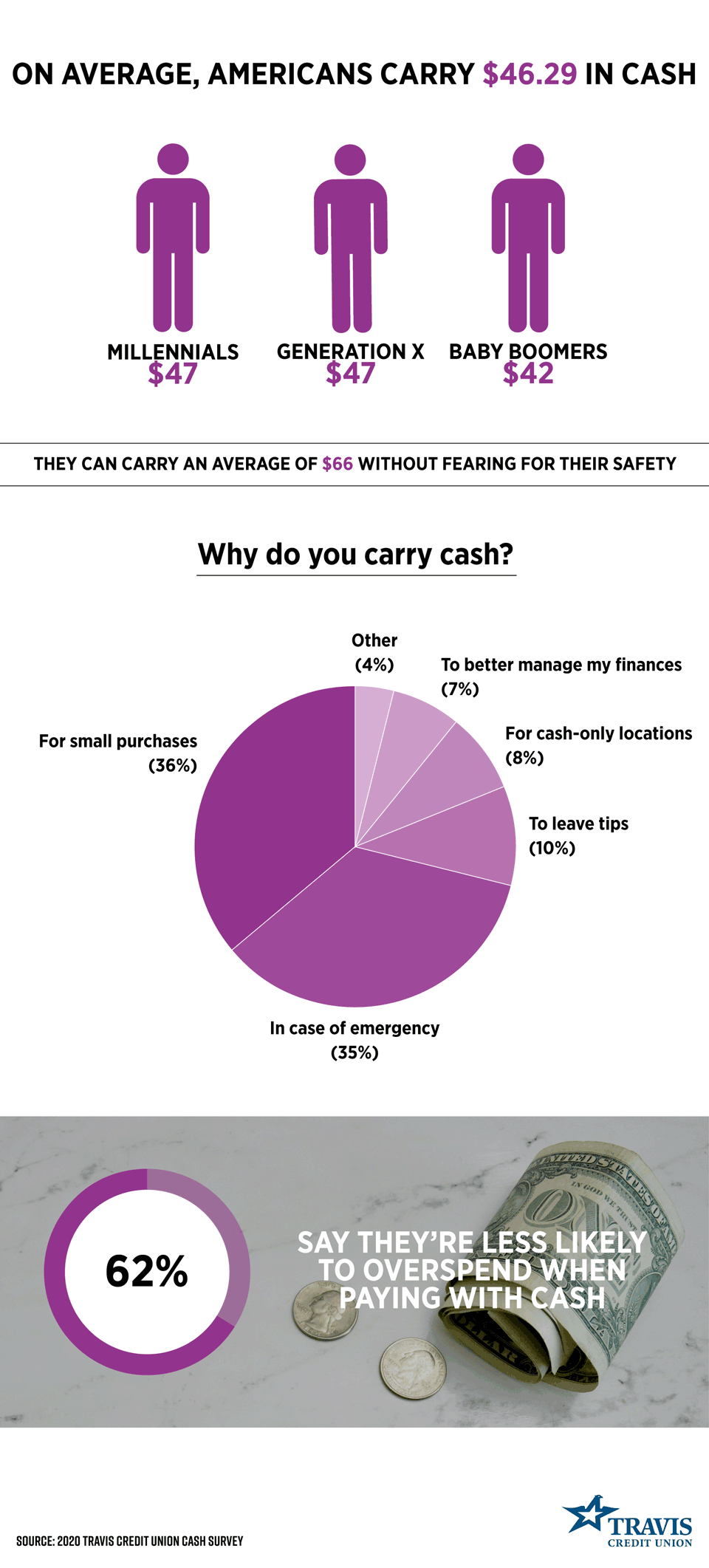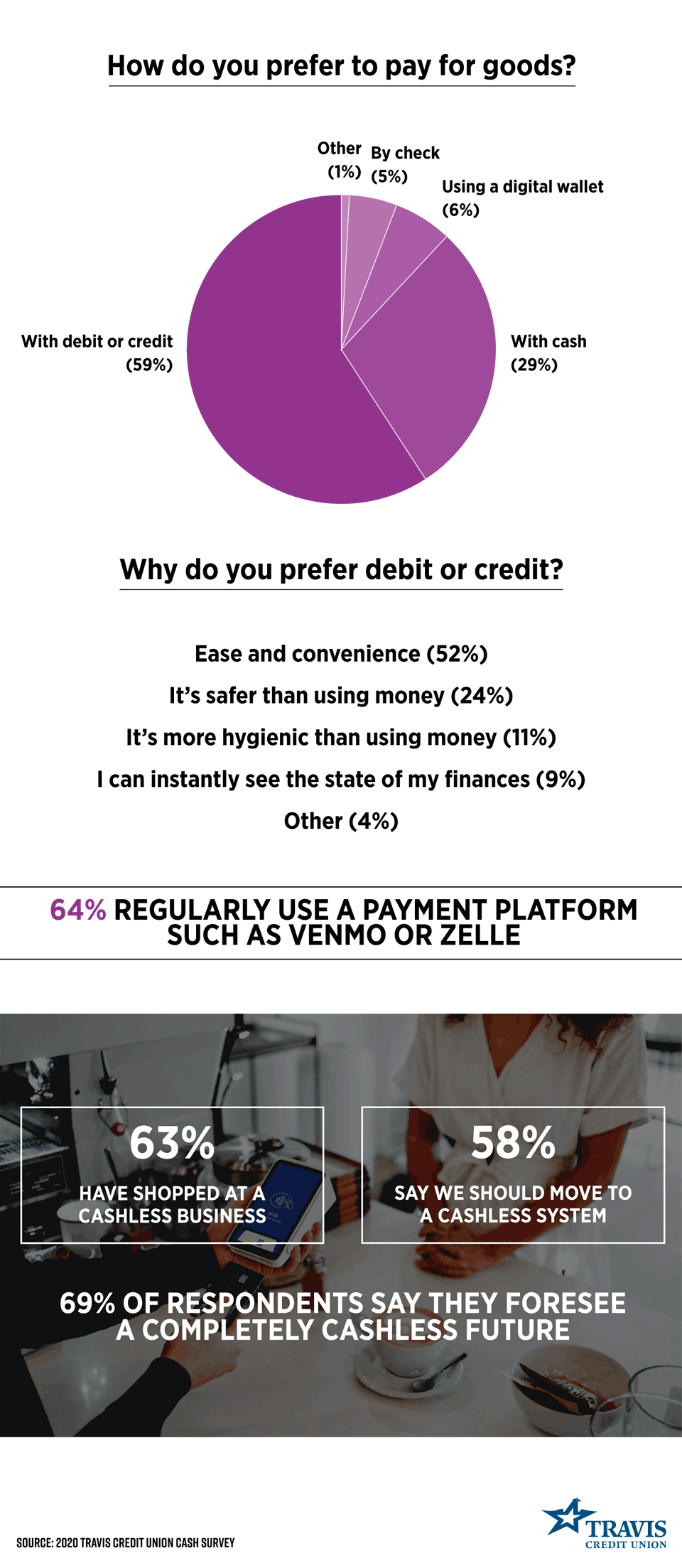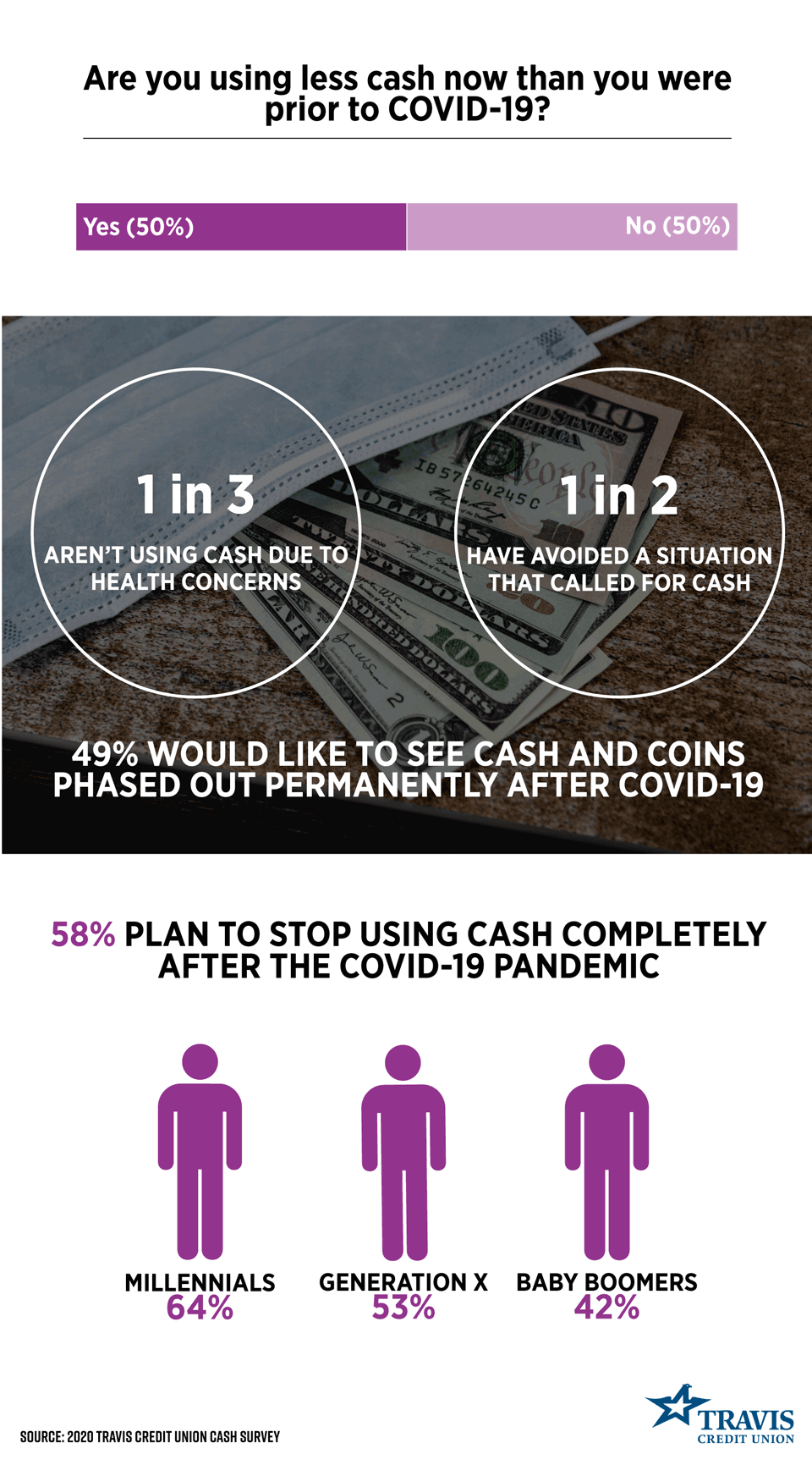Thanks to ever-evolving payment methods and digital banking features such as Zelle®, it’s never been easier to spend our money without touching it.
At Travis Credit Union, we recently surveyed Americans to learn more about their relationship with cash, and we found that respondents are now twice as likely to use a debit or credit card instead of cash to purchase goods. In fact, one in five said they rarely or never carry paper bills. That discovery made us wonder: Is a cashless future upon us?
Before we can think about a cashless future, however, we have to understand our present habits. Fewer than one in five respondents (16%) said they always carry cash, while 27% said they carry it most of the time, and 37% responded ‘sometimes.’ When Americans do have cash on their person, they’re carrying an average of $46.
Perhaps unsurprisingly, millennials are least likely to have bills in their wallet at any given time: 40% said they carry it most or all of the time, compared to 45% of Generation X and 59% of baby boomers. But while boomers are most likely to carry cash, they’re also carrying the least, with just $42 in their wallets, on average.

Cashless Future?
Despite a majority of respondents having cash in their wallet at the time of survey (92%), most don’t like to use it. Just one in three said they prefer to use cash to pay for goods. Of those, more than half (54%) said they do so because of the privacy and security that cash offers. One in three said it’s simply because cash is most widely accepted, and 14% do so in order to stay within their budget rather than risk overspending.
More than half of respondents (55%) chose to use a debit or credit card rather than pay cash for their last purchase.

Many cashless businesses—from ice cream shops to Amazon-powered convenience stores—have popped up across the country, despite pushback from consumers. A majority of respondents (63%) said that they have shopped at these businesses; most often, the cashless customers were millennials (68%), followed by Generation X (60%), and baby boomers (46%).
While going cashless offers a new level of convenience, it’s not without its drawbacks. A majority—7 in 10—worry about having their privacy breached when using a debit or credit card or interacting with a digital platform. Of those who don’t use digital platforms, 61% say they avoid them because of privacy or trust issues. This could explain why, despite a majority envisioning a cashless future, 77% remain steadfast in the belief that all businesses should be required to accept cash.
Going Cashless in the Time of COVID-19
COVID-19 has caused many to re-evaluate the way they approach paper bills and coins out of concern for their health and safety.
In fact, half are using less cash than they were prior to the COVID-19 pandemic, and three in five don’t think they’ll go back to using it regularly when the pandemic ends. Thus, the possibility of a cashless future has never felt more real.

In addition to less frequent paper bill usage, the COVID-19 pandemic has also created a national coin shortage. When asked, half of respondents said they felt the ramifications of the shortage, most often in their attempts to make small purchases (41%), make or get change (26%) and run simple household errands, such as to the laundromat (22%).
Although this is a nationwide issue, we found that it impacts some groups more than others. While just 18% of those making $100,000 or more have been affected by the shortage, 62% of those making between $50,000 and $59,999 say they’ve been impacted—the highest rate of any group.
In addition, Native Americans have been the most affected by the shortage (80%), followed by Native Hawaiian or Pacific Islanders (67%), and Hispanics and Latinos (56%). Caucasians and Asians are least likely to be affected by the shortage: 46% and 34% say they’ve felt its impact, respectively.
Methodology
From August 20, 2020 to August 21, 2020, we surveyed 2,051 people to learn about how they use paper bills and coins. Survey respondents were an average of 38 years old and 49% were female, 51% were male; 99% have a bank account. 63% of respondents were Caucasian, 13% were African American, 9% were Asian, 8% were Native American, 5% were Latino or Hispanic, and 2% were unknown.
For media inquiries, contact [email protected].
Fair Use
Feel free to use this data and research with proper attribution linking to this study. When you do, please give credit and link to https://www.traviscu.org.